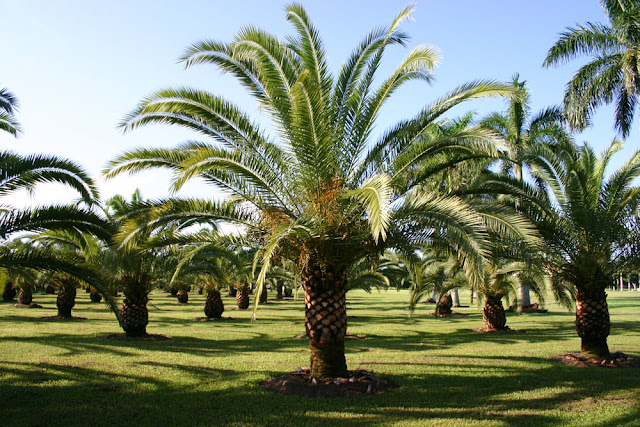 |
| Image credit - http://www.fourjustinfarms.com/ |
 |
| How to grow phoenix canariensis |
Container grown plants will require a good quality compost such as John Innes 'No 2' and a sheltered position in full sun over the growing period. Always harden off before moving outside to prevent scorching and provide a minimum winter temperature of 7° Celsius. If kept under protection all-year-round ventilate whenever temperatures rise beyond 18-21°Celsius.
Water sparingly during its winter rest period of November to mid-May, then water well between May and September, and then moderately until November.
Specimens kept under protection will benefit from having the glass lightly shaded over the summer, but provide full sunlight for the rest of the year.
Repot every two or three years in April, and in years where the specimen is not being potted on provide a liquid soluble fertilizer every week or so from May to September. The final container size should be up to 1 metre wide, but possibly smaller depending on the practicalities of it being moved.
In favorable climates, plants grown permanently outside will perform best in a sheltered, sunny position in a sandy, well-drained, but relatively moist soil. Avoid heavy soils and areas prone to waterlogging. Equally, do not allow newly planted Phoenix canariensis to dry out for extended periods over the summer for at least the first few years in order to avoid root damage or even death. Specimens with a trunk over 2 metres tall will need secured with posts or cables until the root systems establish.
For related articles click onto the following links:
HARDY PALM TREES FOR GROWING IN COLD CLIMATES







No comments:
Post a Comment